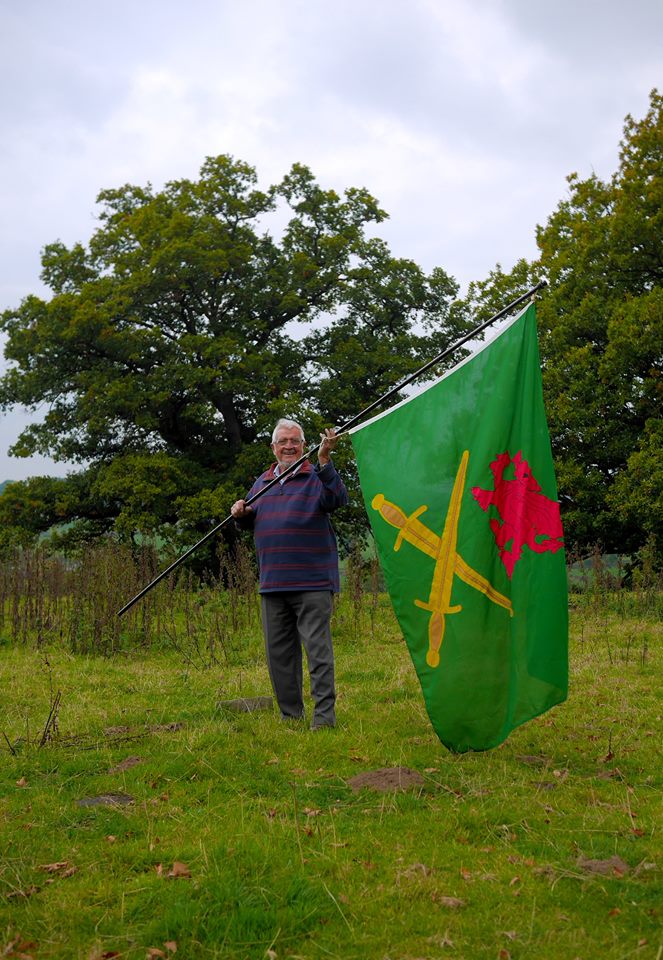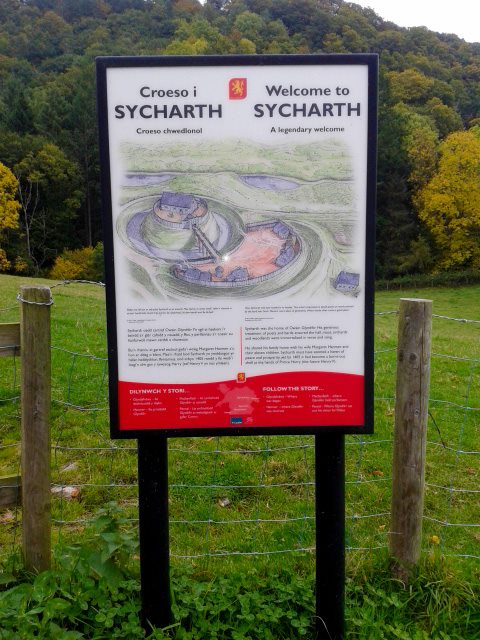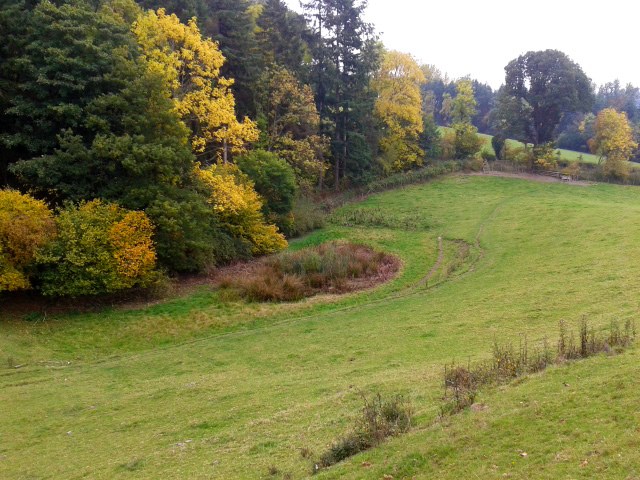Sycharth
The Society’s last outing for 2015 ended with a visit to the site of Owain Glyndwr’s manorial home at Sycharth. Built on the plateau of a former motte and bailey castle, only the earthworks now survive after it was put to the torch in 1403 by Henry of Monmouth (later King Henry V). Glyndwr inherited Sycharth in 1369 and lived there with his wife Margaret Hanmer and their children.

The bard Iolo Goch (1320 – 1398) was a frequent visitor and his poem ‘Llys Owain Glyndwr yn Sycharth’ in the form of a cywydd gives a detailed description if the mansion, its environs and of the generous hospitality of its owner.
The cywydd states that the mansion is set inside a moat,
‘Llyna’r modd a’r llun y mae,
Mewn eurgylch dwfr mewn argae’
and is approached over a bridge and through a gatehouse.
Iolo says it was built in the French style and compares it favourably to the tower of St Patrick’s cathedral in Dublin and the cloister at Westminster.
‘Clochdy Padrig, Ffrengig ffrwyth
Clostr Wesmestr, cloau ystwyth’
The building was cantilevered over the edge of the motte and its floor supported by means of struts into the hillside. It had numerous rooms on three floors, a tiled roof and a chimney that did not create smoke.
‘To teils ar bob ty talwg,
A simnai ni fagai fwg’
The church, also on the motte, was in the form of a square cross, the transcept and nave being of equal length, was limewashed and had stained glass windows.
‘Croes eglwys gylchlwys galchliw,
Capelau a gwydrau gwiw’
Nearby were the houses of his retinue, shops stocked as full as Cheapside ‘Siop lawndeg fal Siep Lundain’ and an orchard, vineyard, mill, dovecot and well sheltered fishponds.
‘Perllan, gwinllan ger gwenllys ….
Melin deg a ddifeg ddwr,
A’i golomendy gloyw maendwr,
Pysgodlyn, cuddiglyn cau.’
Iolo Goch would not have lied about what he saw at Sycharth – the cywydd would have been read by the Welsh nobility who had also visited Glyndwr’s mansion.
Sycharth is a location that should resonate strongly in the Welsh psyche. It is a great shame therefore that the route to the site is poorly signposted and that Cadw’s information board showing an impression of the manor is totally at odds with the literary and archaeological evidence.


